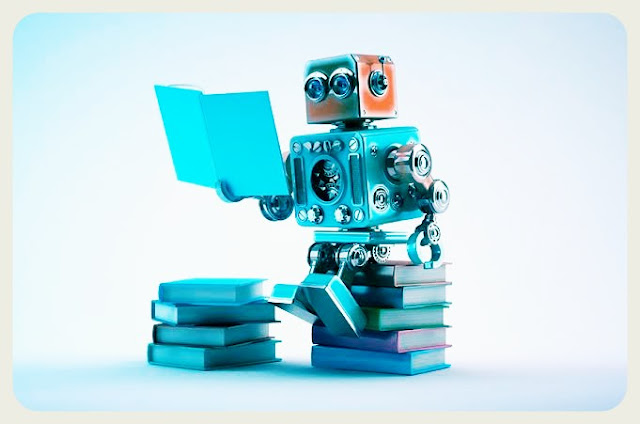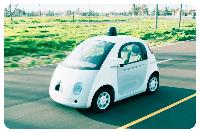Health technology🤔
Page views

Health tech
The definition of Health Tech, or digital📺 health, is the use of technology (databases, applications, mobiles📱, wearables) to improve the delivery, payment, and/or consumption of care, with the ability to increase the development and commercialization of medicinal products.
Some examples for health tech
1.GPS patches

Miniature sensors embedded in the skin of patients have been tested since 2011 to monitor and locate disabled people and Alzheimer sufferers.
2.Communicating pens, telemonitoring and videoconference patients on dialysis
French charity Calydial received the innovation prize at last year’s HIT (Health Information Technologies) fair for its telemedicine projects, which include monitoring patients with kidney failure. Calydial’s doctors can remotely monitor patients undergoing dialysis, live, thanks to a system of surveillance cameras set up by the patients’ bedside.
3. 3D Printing

Originally used primarily in manufacturing, today's 3D printer are finding numerous applications in healthcare. Frequently used to create such items as dentures or customized casts that allow for quicker healing of broken bones, they are also being used by surgeons prior to surgery. By creating multidimensional models of the parts of a patient's body, surgeons can simulate several different scenarios prior to ever entering the operating room. This technology is already being used extensively by thoracic surgeons at the Kaiser Los Angeles Medical Center, and it's expected to find many more uses in the years ahead due to engineers being able to make 3D printers that are much smaller than today's desktop models.
4. Dental Equipment

Dental health is one of the areas most affected by emerging technologies. New equipment such as advanced X-ray screenings and 3D models of teeth, dentures, and implants are making complex processes and procedures a lot easier on dentists. There are also many more avenues for dentists to find the equipment like air compressors for bonding veneers. Manufacturers like Kruman equipment co even make renting a possibility, so small dental practices can save money while still making the most of the technologies available to them.
The technological advancements happening in healthcare today are truly life-changing for both providers and patients. Whether it's a printer creating a model of a person's heart, or a sensor monitoring biomarkers indicating the presence or predisposition of certain diseases, there's no doubt the field of medicine is experiencing unprecedented changes in patient care.
5.Robotic Nurse Assistant

I have many of friends that are nurses that are injured every year from having to move or lift patients in bed or after an emergency from a fall. The problem is very common and many of times there is not someone around that is strong enough to lift a patient immediately after one of these occurrences. There are many variations from a full robot such as RIBA (Robot for Interactive Body Assistance) developed by RIKEN and Tokai Rubber Industries and assisted hardware such as HAL (Hybrid Assistive Limb) robot suits delivered by Cyberdyne.
RIBA is the first robot that can lift up or set down a real human from or to a bed or wheelchair. RIBA does this using its very strong human-like arms and by novel tactile guidance methods using high-accuracy tactile sensors. RIBA was developed by integrating RIKEN’s control, sensor, and information processing and TRI’s material and structural design technologies.
A company by the name of HAL is a robotics device that allows a care worker to life a patient with more stability and strength and helps prevent injuries to our nurses.
6. Artificial Retinas
The United States typically defines someone as legally blind when the person’s central vision has degraded to 20/200, or the person has lost peripheral vision so that he sees less than 20 degrees outside of central vision. Normal vision is 20/20, and people can usually see up to 90 degrees with their peripheral vision. An estimated 1.1 million people in the United States are considered legally blind. This has led to companies like Nano-Retina to develop a sophisticated and elegant solution intended to restore the sight of people who lost their vision due to retinal degenerative diseases. The miniature Nano Retina device, the NR600 Implant, replaces the functionality of the damaged photoreceptor cells and creates the electrical stimulation required to activate the remaining healthy retinal cells. NR600 consists of two components; a miniature implantable chip and a set of eyeglasses worn by the patient.
Very interesting technology for those that are always sitting in front of the computer like myself, hopefully it will not be needed by me, but it’s great that companies are advancing for those that suffer this debilitating illness.
7. Advances in Prosthetics
War is in our DNA, and with conflict, there is injuries to our Military including loss of limbs and traumatic brain injury. DARPA is looking to change that by enabling wounded service members with amputations to neurally control state-of-the-art prosthetic limbs. The goal is to assist them in returning to active duty and to improve their quality of life. Program developments may impact the broad community of patients with medical amputations, spinal cord injuries and neurological diseases. The challenges lie with creating an interface that is directly compatible with our own nervous system and making the connection fast enough to interpret our movement intent without latency. I have been following Les’s story (an amputee) for a while and featured it in last years 2015 version of this article, see video below and wanted to showcase it again as organizations such as Johns Hopkins are making great strides in the movement to help the world live and easier life.
8.Tooth Regeneration
Hey Kids, here is some candy! All kidding aside, this could be an amazing advancement if the technology holds true in the coming years.
Colorful fish found in Africa may hold the secret to growing lost teeth. In a collaborative study between the Georgia Institute of Technology and King’s College London, researchers looked at the cichlid fishes of Lake Malawi in Africa, who lose teeth just to have a new one slide into place. Their study, published in the Proceedings of the National Academy of Sciences, identifies the genes responsible for growing new teeth and may lead to the secret to “tooth regeneration” in humans.
“The exciting aspect of this research for understanding human tooth development and regeneration is being able to identify genes and genetic pathways that naturally direct continuous tooth and taste bud development in fish, and study these in mammals,” said the study’s co-author Paul Sharpe, a research professor from King’s College, in a press release. “The more we understand the basic biology of natural processes, the more we can utilize this for developing the next generation of clinical therapeutics: in this case how to generate biological replacement teeth.”
Another study from a Harvard team successfully used low-powered lasers to activate stem cells and stimulate the growth of teeth in rats and human dental tissue in a lab. The results were published today in the journal Science Translational Medicine. Stem cells are no ordinary cells. They have the extraordinary ability to multiply and transform into many different types of cells in the body. They repair tissues by dividing continually either as a new stem cell or as a cell with a more specialized job, such as a red blood cell, a skin cell, or a muscle cell.
Dentures and dental implants may soon become a thing of the past. Stem cell research is making it possible to regrow your missing teeth!
This is a much-needed medical advancement, especially considering that by age 74—26% of adults have lost all of their permanent teeth
Main problem in health tech:
Very interesting technology for those that are always sitting in front of the computer like myself, hopefully it will not be needed by me, but it’s great that companies are advancing for those that suffer this debilitating illness.
7. Advances in Prosthetics
War is in our DNA, and with conflict, there is injuries to our Military including loss of limbs and traumatic brain injury. DARPA is looking to change that by enabling wounded service members with amputations to neurally control state-of-the-art prosthetic limbs. The goal is to assist them in returning to active duty and to improve their quality of life. Program developments may impact the broad community of patients with medical amputations, spinal cord injuries and neurological diseases. The challenges lie with creating an interface that is directly compatible with our own nervous system and making the connection fast enough to interpret our movement intent without latency. I have been following Les’s story (an amputee) for a while and featured it in last years 2015 version of this article, see video below and wanted to showcase it again as organizations such as Johns Hopkins are making great strides in the movement to help the world live and easier life.
8.Tooth Regeneration
Hey Kids, here is some candy! All kidding aside, this could be an amazing advancement if the technology holds true in the coming years.
Colorful fish found in Africa may hold the secret to growing lost teeth. In a collaborative study between the Georgia Institute of Technology and King’s College London, researchers looked at the cichlid fishes of Lake Malawi in Africa, who lose teeth just to have a new one slide into place. Their study, published in the Proceedings of the National Academy of Sciences, identifies the genes responsible for growing new teeth and may lead to the secret to “tooth regeneration” in humans.
“The exciting aspect of this research for understanding human tooth development and regeneration is being able to identify genes and genetic pathways that naturally direct continuous tooth and taste bud development in fish, and study these in mammals,” said the study’s co-author Paul Sharpe, a research professor from King’s College, in a press release. “The more we understand the basic biology of natural processes, the more we can utilize this for developing the next generation of clinical therapeutics: in this case how to generate biological replacement teeth.”
Another study from a Harvard team successfully used low-powered lasers to activate stem cells and stimulate the growth of teeth in rats and human dental tissue in a lab. The results were published today in the journal Science Translational Medicine. Stem cells are no ordinary cells. They have the extraordinary ability to multiply and transform into many different types of cells in the body. They repair tissues by dividing continually either as a new stem cell or as a cell with a more specialized job, such as a red blood cell, a skin cell, or a muscle cell.
Dentures and dental implants may soon become a thing of the past. Stem cell research is making it possible to regrow your missing teeth!
This is a much-needed medical advancement, especially considering that by age 74—26% of adults have lost all of their permanent teeth
Main problem in health tech:
The proliferation of data is incredibly important for the future of Health Tech and it is vital to the continuation of solutions to disease prevention, patient communication services and consumer wearables technology.
Expensive
An increasingly sophisticated health technology definitely does not come cheap. We have to understand that all first world national healthcare systems face a range of challenges; one of which is the ageing population. People are living longer. So what does this imply? This means an increased health needs but the working population generatinng income to pay for healthcare system is reduced. So one consideration would be, is the high cost which comes with high technology economically viable for the government?
Requires time to adapt fast
As we know, technology is constantly evolving. Many a time there will be new softwares, new upgrades, new way of doing things. In order to keep up with the competitive edge, hospital staff has to keep up with such changes. This can be a struggle for some, especially for the older staff.
Over-dependency on technology

While once the staff has adapted to the new way of work, there comes the next problem. It is not uncommon for a computer system to face technical errors. The health care informatics system is no exception. This problem is especially crucial in the Accident & Emergency (A&E) Department. Various departments in the hospital are interconnected by a common information system. When 1 department is down, others are affected. For example, a patient was rushed into the A&E Department. When there is an error while retrieving blood analysis information, the rest of the procedures following it will be delayed. This will cause huge inconveniences, or worse; it may even have adverse effects in the patient’s health condition.
Future outlook
To conclude, Health Tech as an industry is in an enviable position as its financial and consumer backing promises a strong and continued growth chart over the coming years.
The promise of technology to innovate and update comes at a time when healthcare needs to respond to the growing demand of resources, and the digital health revolution is in a strong position to not only create solutions, but deliver them as well.
The sector is still young, however, and fragmented, and for the current Health Tech industry to grow further, the regulatory environment in particular needs to evolve alongside digital health in order for them both to benefit the public which they have been designed to achieve.
Some of the other trends in Health Tech:
1.Augmented Reality:
a technology that superimposes a computer-generated image on a user's view of the real world, thus providing a composite view.
Uses in health tech:
Training new doctors. Diagnosing disease. In the operating room.
2.Drones
An unmanned aerial vehicle, commonly known as a drone, is an aircraft without a human pilot aboard. UAVs are a component of an unmanned aircraft system; which include a UAV, a ground-based controller, and a system of communications between the two
Uses in health tech:
delivering prescriptions to your door.
3.Music Therapy
Music therapy is the use of music to improve health or functional outcomes. Music therapy is a creative arts therapy, consisting of a process in which a music therapist uses music and all of its facets—physical, emotional, mental, social, aesthetic, and spiritual—to help clients improve their physical and mental health
Uses in health tech
HealthTunes has music to help with conditions from pain management to Parkinson’s to neonatal intensive care.
The promise of technology to innovate and update comes at a time when healthcare needs to respond to the growing demand of resources, and the digital health revolution is in a strong position to not only create solutions, but deliver them as well.
The sector is still young, however, and fragmented, and for the current Health Tech industry to grow further, the regulatory environment in particular needs to evolve alongside digital health in order for them both to benefit the public which they have been designed to achieve.
Some of the other trends in Health Tech:
1.Augmented Reality:
a technology that superimposes a computer-generated image on a user's view of the real world, thus providing a composite view.
Uses in health tech:
Training new doctors. Diagnosing disease. In the operating room.
2.Drones
An unmanned aerial vehicle, commonly known as a drone, is an aircraft without a human pilot aboard. UAVs are a component of an unmanned aircraft system; which include a UAV, a ground-based controller, and a system of communications between the two
Uses in health tech:
delivering prescriptions to your door.
3.Music Therapy
Music therapy is the use of music to improve health or functional outcomes. Music therapy is a creative arts therapy, consisting of a process in which a music therapist uses music and all of its facets—physical, emotional, mental, social, aesthetic, and spiritual—to help clients improve their physical and mental health
Uses in health tech
HealthTunes has music to help with conditions from pain management to Parkinson’s to neonatal intensive care.
Is this article is useful
👍 👎
Follow our group LATEST TECHNOLOGY on Facebook by click here
Technology tips #5
1.If your phone battery is really low and you need it for later don't turn it off. Instead, put it on airplane mode. Turning it off and on will waste more battery life.
2.If you have a computer that blocks sites such as YouTube, Google Chrome’s incognito mode will let you access them.
Life hacks #5
1.Trying to quit smoking? Lick a little salt with the tip of your tongue whenever you feel the urge to smoke. This is said to break the habit within a month.
2.Make a password into a goal of yours so you constantly have to be reminded of it.
If you find this information is useful then share this with your friends
Friends














